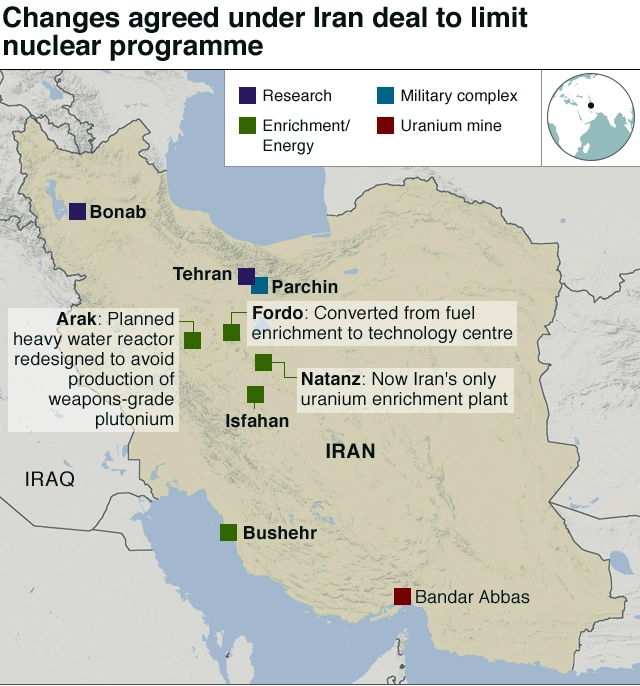Restoration of JCPOA | 08 Feb 2022
For Prelims: Joint Comprehensive Plan of Action (JCPOA), International Atomic Energy Agency (IAEA).
For Mains: Timeline & Background of JCPOA, Impacts on India of Restoration of JCPOA.
Why in News?
Recently, the US has restored sanctions waivers to Iran to allow international nuclear cooperation projects, as indirect American-Iranian talks on reviving the 2015 international nuclear deal with Iran enter the final stretch.
- The waiver allows other countries and companies to participate in Iran’s civilian nuclear programme without triggering US sanctions on them, in the name of promoting safety and non-proliferation.
- The waivers were revoked by the United States in 2019 and 2020 under former President Donald Trump, who pulled out of the nuclear agreement. The agreement is formally called the Joint Comprehensive Plan of Action (JCPOA).
What is the Timeline & Background of JCPOA?
- The JCPOA was the result of prolonged negotiations from 2013 and 2015 between Iran and P5+1 (China, France, Germany, Russia, the United Kingdom, the United States).
- It happened due to the backchannel talks between the US (President Barack Obama) and Iran, quietly brokered by Oman, in an attempt to repair the accumulated mistrust since the 1979 Islamic revolution.
- Islamic Revolution, also called Iranian Revolution, popular uprising in Iran in 1978–79 that resulted in the toppling of the monarchy on 11th February, 1979, and led to the establishment of an Islamic republic.
- The JCPOA obliged Iran to accept constraints on its uranium enrichment program verified by an intrusive inspection regime in return for a partial lifting of economic sanctions.
- However, faced with a hostile Republican Senate, President Obama was unable to get the nuclear deal ratified but implemented it on the basis of periodic Executive Orders to keep sanction waivers going.
- When Donald Trump became president, he withdrew from the deal and called it a “horrible, one-sided deal that should have never, ever been made”.
- The US decision was criticized by all other parties to the JCPOA (including the European allies) because Iran was in compliance with its obligations, as certified by the International Atomic Energy Agency (IAEA).
- Tensions rose as the US pushed ahead with its unilateral sanctions, widening its scope to cover nearly all Iranian banks connected to the global financial system, industries related to metallurgy, energy, and shipping, individuals related to the defence, intelligence, and nuclear establishments.
- For the first year after the US withdrawal, Iran’s response was muted as the E-3 (France, Germany, the U.K.) and the European Union (EU) promised to find ways to mitigate the US decision.
- The E-3’s promised relief Instrument in Support of Trade Exchanges (INSTEX), created in 2019 to facilitate limited trade with Iran.
- However, by May 2019, Iran’s strategic patience ran out as the anticipated economic relief from the E-3/EU failed to materialize.
- As the sanctions began to hurt, Iran shifted to a strategy of ‘maximum resistance’.
What will be the Impacts on India of Restoration of JCPOA?
- Restoration of JCPOA may ease many restrictions over the Iranian regime, which may directly or indirectly help India. This can be reflected in the following examples:
- Boost to Regional Connectivity: Removing sanctions may revive India’s interest in the Chabahar Project, Bandar Abbas port, and other plans for regional connectivity.
- This would further help India to neutralize the Chinese presence in Gwadar port, Pakistan.
- Apart from Chabahar, India’s interest in the International North-South Transit Corridor (INSTC), which runs through Iran, which will improve connectivity with five Central Asian republics, may also get a boost.
- Energy Security: Due to the pressure linked to the US’ Countering America’s Adversaries Through Sanctions Act (CAATSA), India has to bring down oil imports to zero.
- Restoration of ties between the US and Iran will help India to procure cheap Iranian oil and aid in energy security.

